
|
G 42 Beyer Peacock & Co B/N 6268 of 1926 |

This photo was contributed by Gordon Ross and shows G 42 on a special charter at Belgrave on 18th April 2004.
|
Sisters G 41 and G 42 were built by Beyer Peacock & Co of Manchester in 1926 as essentially a copy of the earlier 3' 6" gauge West Australian Government Railways Ms-class Garratt design, modified for the narrower 2' 6" gauge by placing the driving wheels inside the frames. Other design updates included increasing the cylinder diameter by 1/4", slightly inclining the cylinders and increasing the boiler pressure from 160psi to 180psi. b These Beyer-Garratt locomotives were intended to eliminate double-heading of the smaller NA class 2-6-2T locomotives on the heaviest traffic on the Victorian Railways narrow gauge lines, with the selected design having almost twice the tractive effort of an NA. G 41 was allocated to the Colac-Beech Forest-Crowes line, while G 42 was allocate to the Moe-Walhalla line. In their first year they achieved reductions of 23% in train-miles and 13% in locomotive costs. An interesting article "G 42 - Giant of the Narrow Gauge" by Michael Venn describes how G 41 and G 42 were introduced with MCB automated couplings as a successful trial of this equipment on the Victorian Railways. b Following the closure of the Moe-Walhalla line in 1954, G 42 was overhauled and transferred to the Colac-Beech Forest-Crowes line in 1955. Here it assumed most duties from G 41 which was more worn following years of service on the heavier traffic on this line. In 1962 the Colac line also closed. While G 41 was scrapped in 1964, fortunately G 42 had been purchased for preservation in 1963 by the Puffing Billy Preservation Society. G 42 was displayed at the Menzies Creek Museum until 1977 until transferred to Belgrave, where restoration to operation began in earnest in the late 1980's. As a quirk of ferroequinology history, Australian Portland Cement at Fyansford had also selected the WAGR Ms-class design for their locomotive needs. The boiler of their No.1 had been saved by the PBPS and was overhauled and fitted to G 42 during its rebuilding. G 42's original boiler is now displayed at Menzies Creek Museum. After a very thorough and expensive restoration, G 42 was returned to service on 11 March 2004 when she moved under her own steam for the first time in 42 years. Today G 42 continues to satisfy its original design brief by eliminating double-heading of the NA locomotives on Puffing Billy's heaviest weekend trains. c A. E. Durrant's excellent book "Garratt Locomotives of the World" is recommended reading for further information about Beyer-Garratt locomotives. |
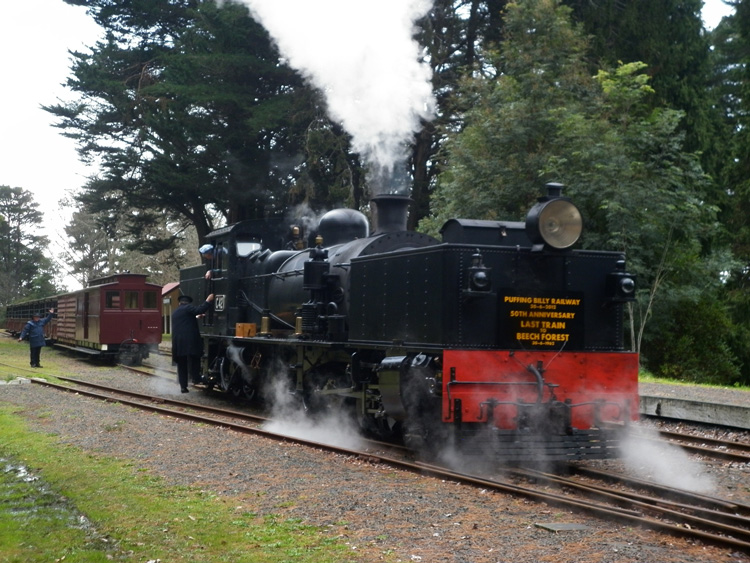
Max Bracher has provided this view of G 42 on 30 June 2012 at the Puffing Billy event
commemorating the 50th anniversary of the last train to Beech Forest."
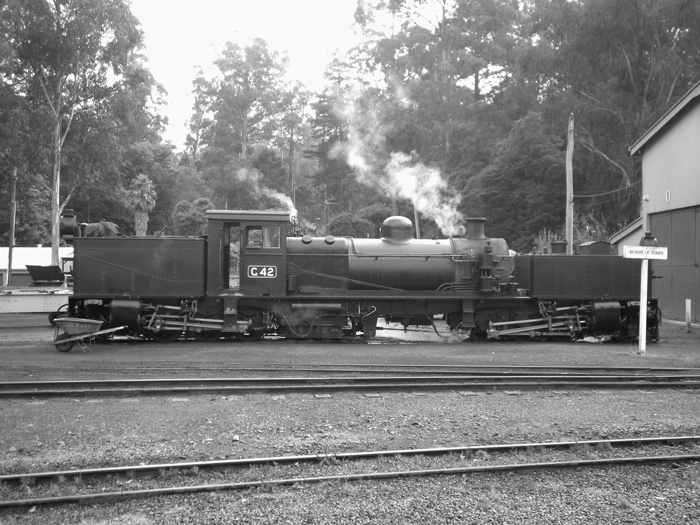
Max Bracher has also contributed this view of G 42 outside the Belgrave loco shed on 7 April 2012.
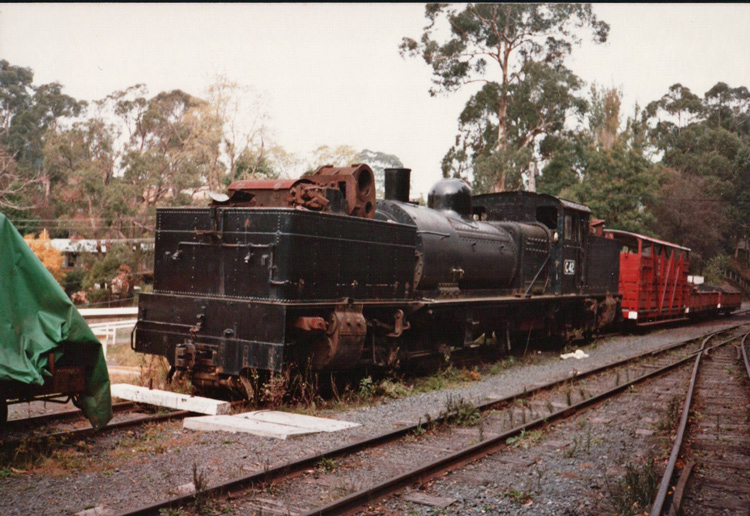
This much earlier scanned view shows G42 in the siding at Belgrave in May 1986, prior to restoration commencing.
A spare cylinder block can be seen resting on the front water tank.
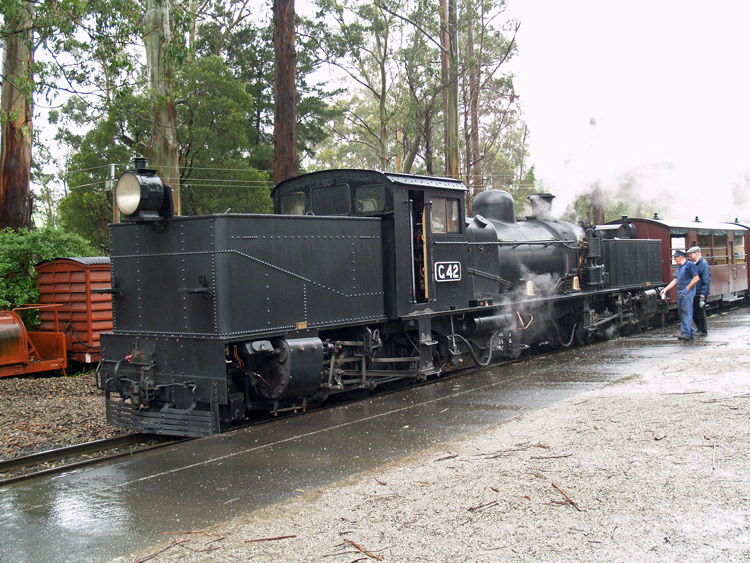
G 42 prepares for departure from Menzies Creek. 13 October 2013.
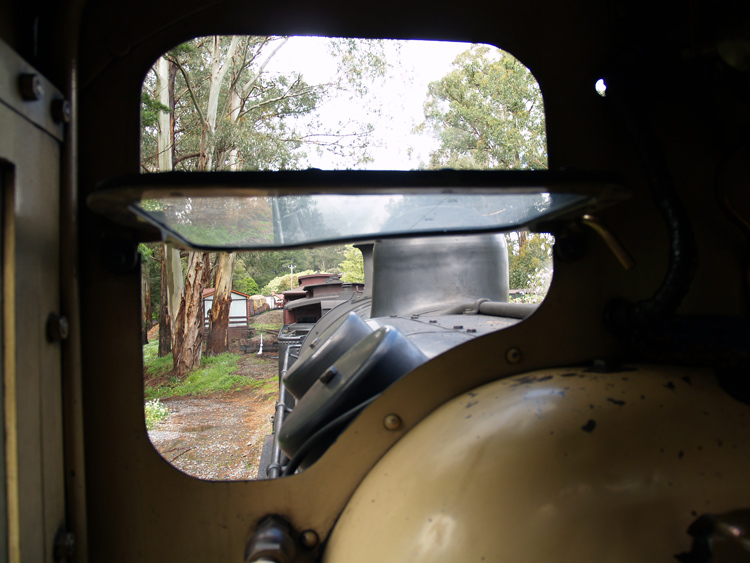
A view from the cab as G 42 and train depart Menzies Creek. 13 October 2013.
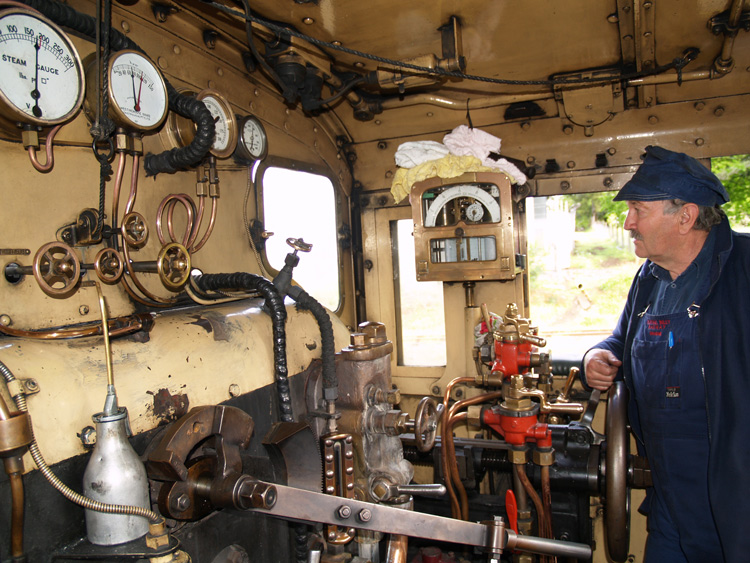
G 42 cab. Menzies Creek, 13 October 2013.
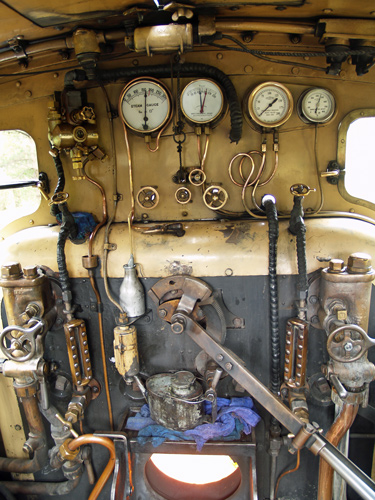
G 42 cab and firebox view. Menzies Creek, 13 October 2013.
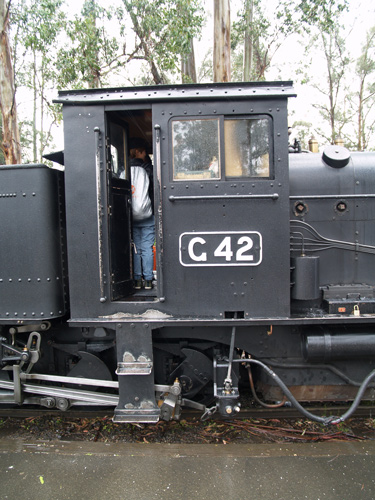
Cab detail. 13 October 2013.
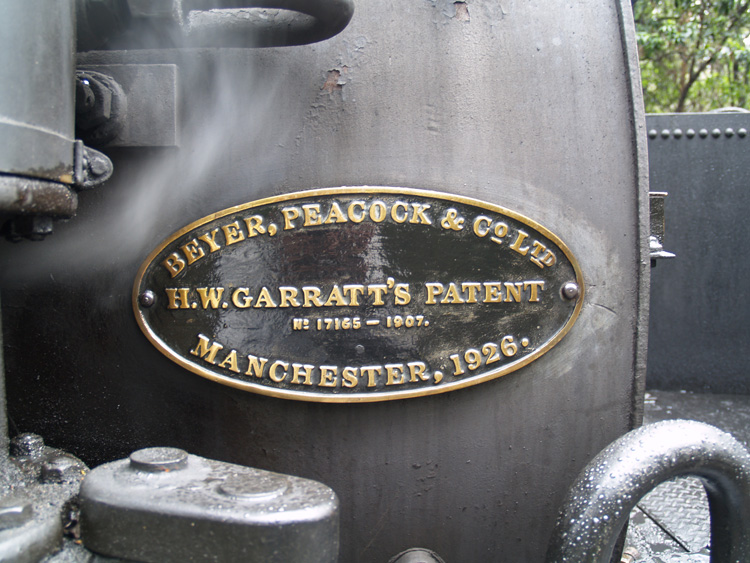
G 42's Beyer Peacock & Co builder's plate attached to the smokebox. 13 October 2013.

7A's toolbox (secured by a VR padlock!) was allocated to G 42 and spotted on the running board. 13 October 2013

G 42 coasts downhill towards Lakeside station. 13 October 2013.
References
| a | A. E. Durrant, "Garratt Locomotives of the World" published by Bracken Books, London, 1987 |
| b | "Narrow Gauge, Journal of the Puffing Billy Preservation Society, Australia" No.139, December 1995. |
| c | Webmaster's observation or comment. |
Page updated: 17 March 2014